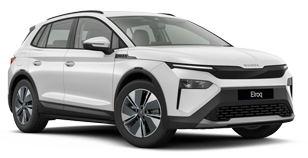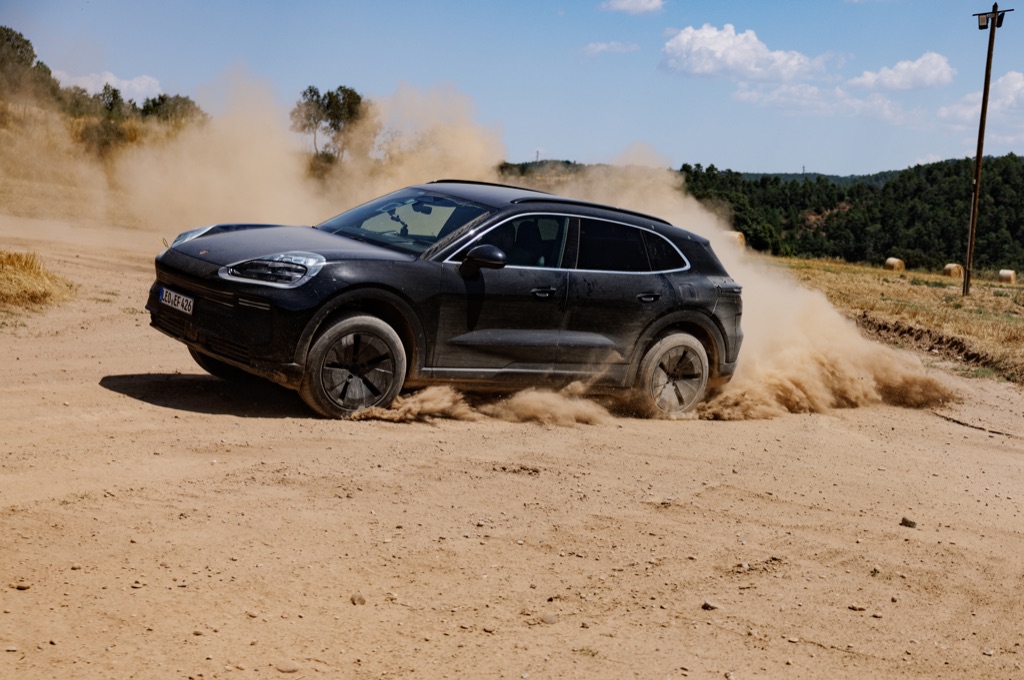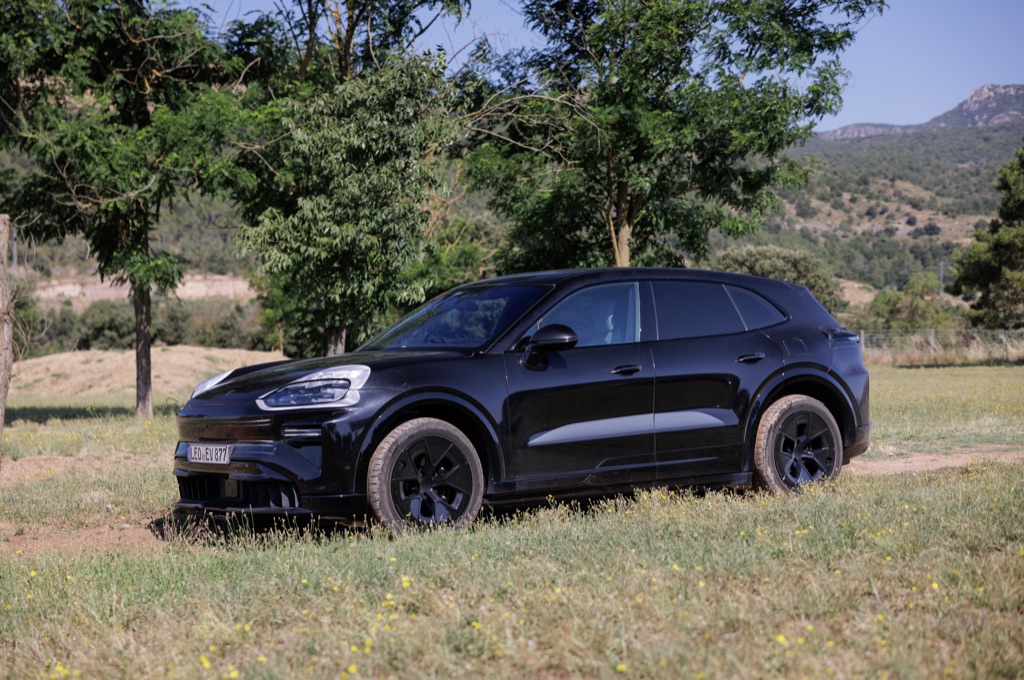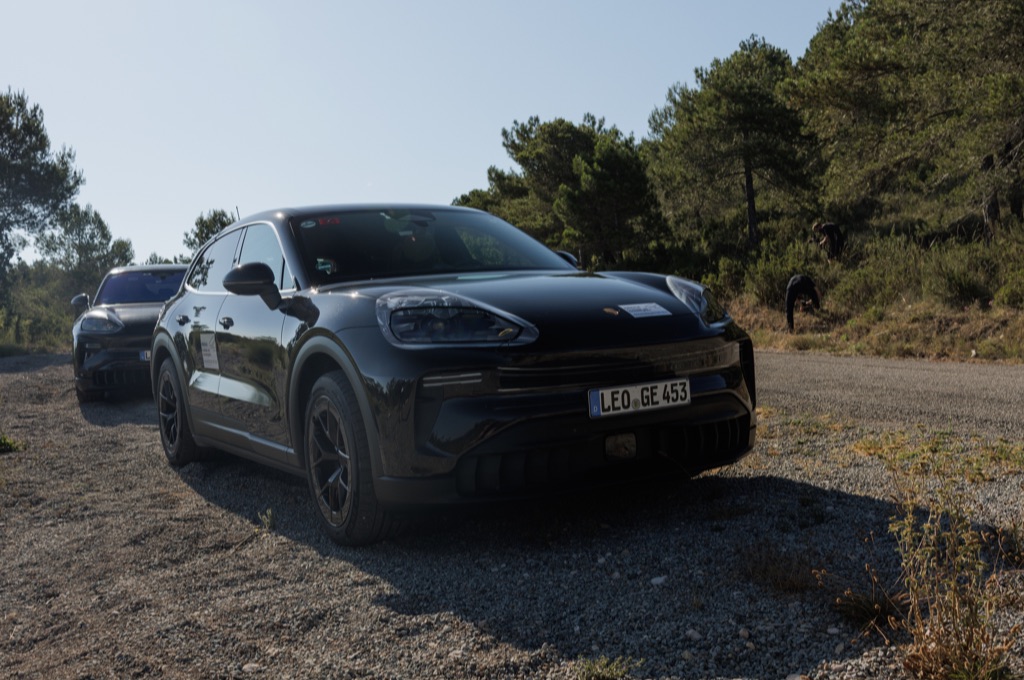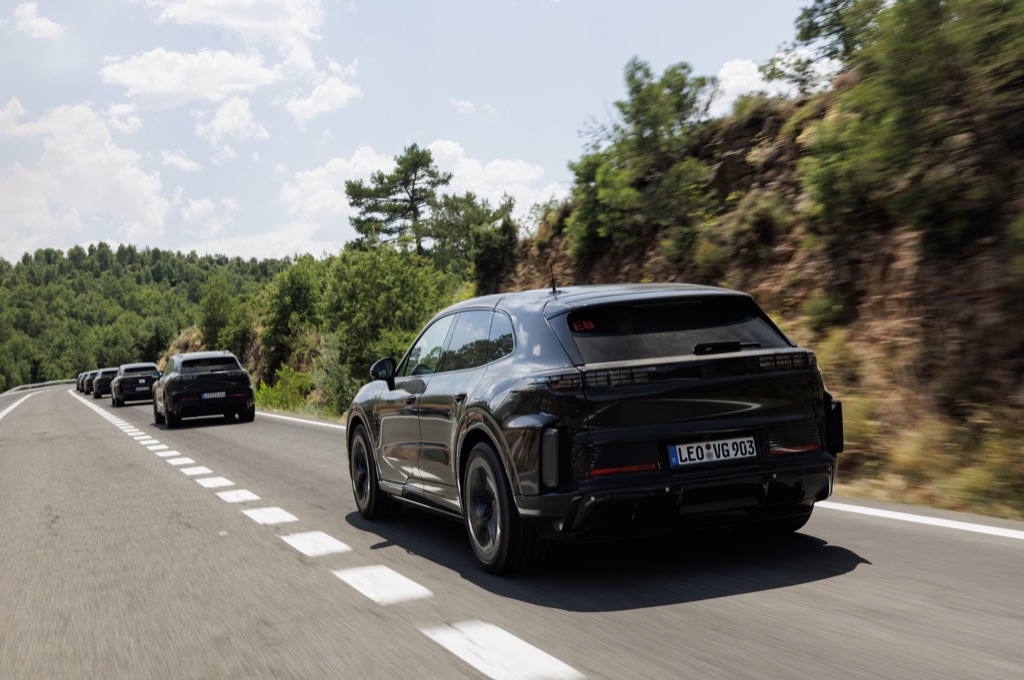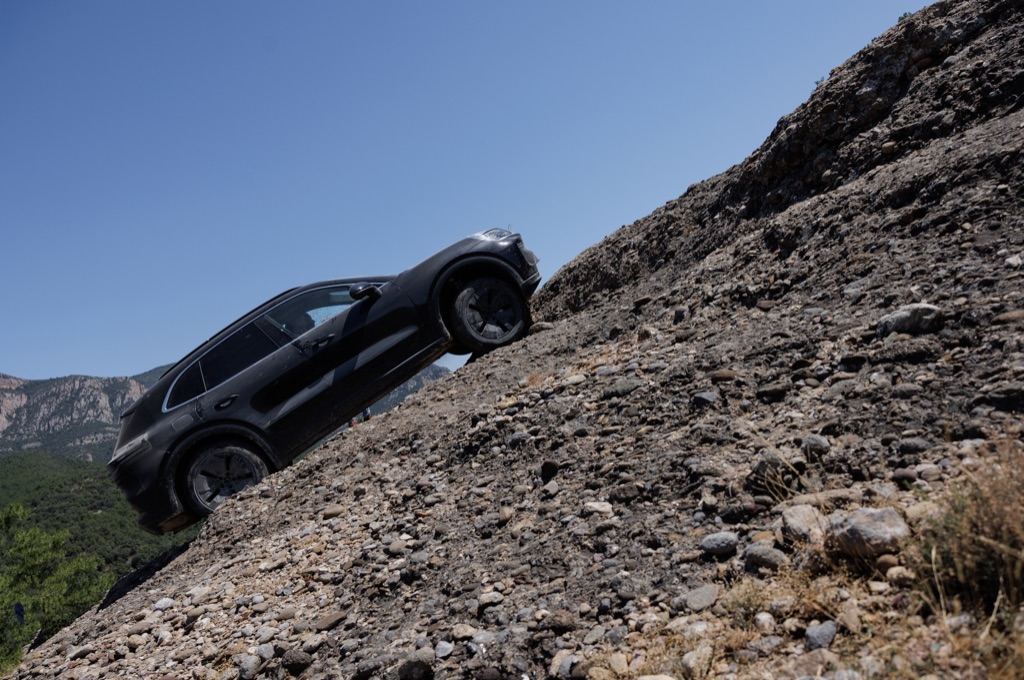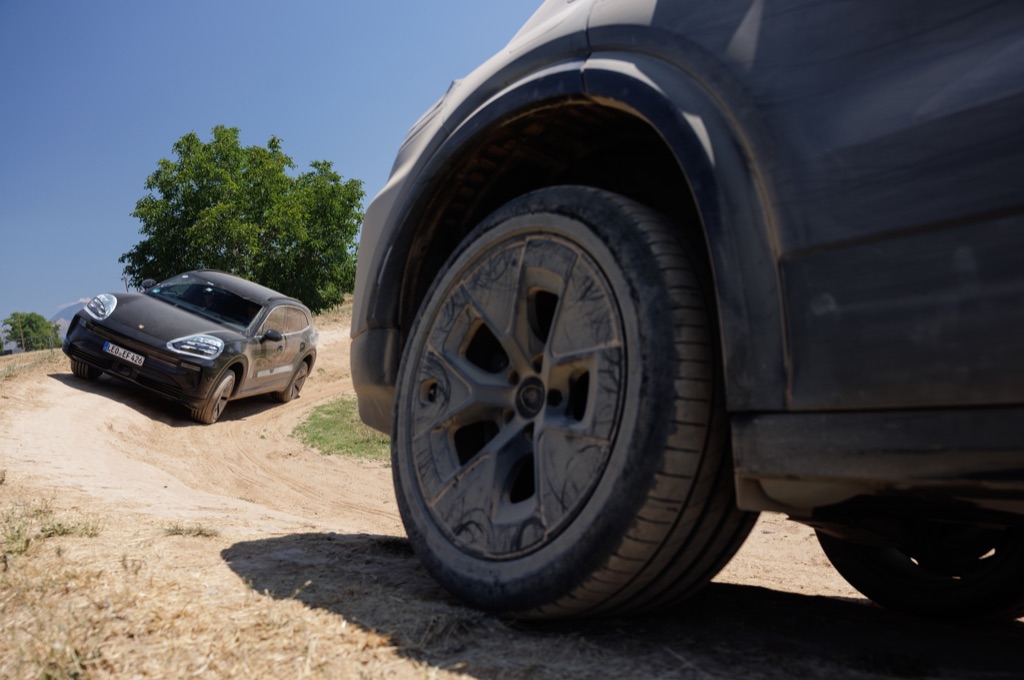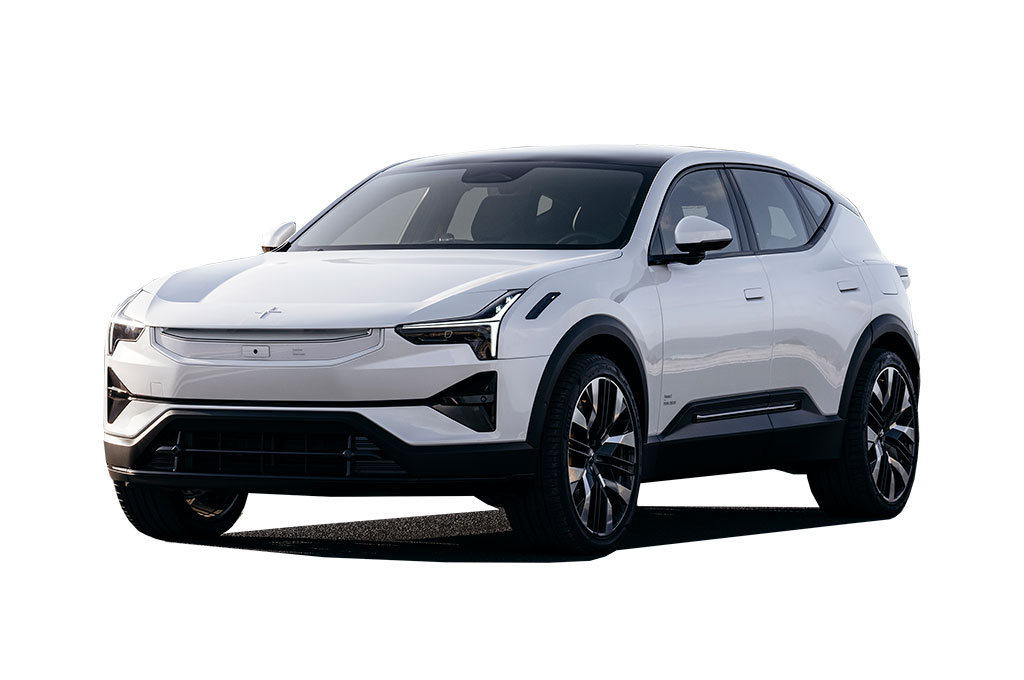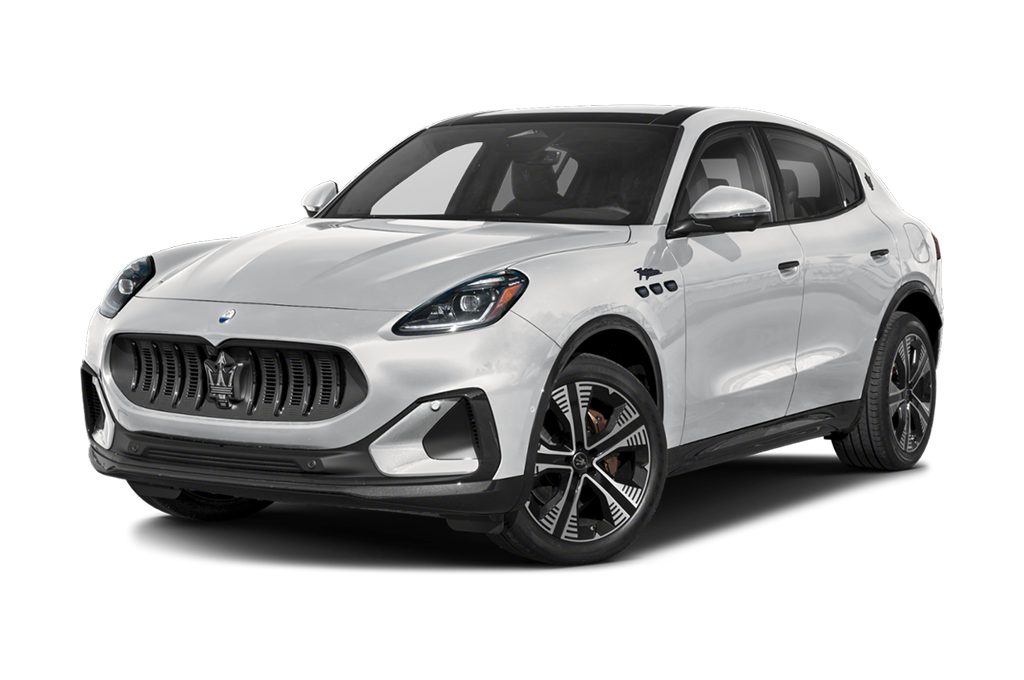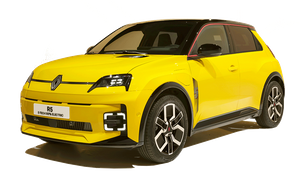Introduction and model history
Steep rock steps, narrow passages, sharp twists and turns… There’s no smooth road in sight. Michael Schätzle is not going easy on his electric Porsche Cayenne prototype, which I’m out having a drive in ahead of its world premiere later this year. This is a car that hasn’t even been revealed yet, so you’ll have to forgive the disguise!
Suffice to say that, from what I could see, the electric Cayenne will be fairly easy to distinguish from the existing petrol-powered model that will continue to be sold alongside for the foreseeable future.
Importantly, this drive around the hinterland of Barcelona’s mountains not only demonstrates the seriousness with which the new Cayenne’s series manager is testing the car. It also symbolises the state of electric mobility at Porsche. Even though this brand was at the forefront of the electric revolution five years ago with the Taycan (a car that we still love, by the way) they’ve seen sales slide for the battery-powered Taycan and Macan models.

So, it's no wonder that Schätzle – Vice President of the Cayenne model line - is preparing this fourth generation Cayenne for a rocky road ahead.
Instead of simply stretching the Macan, his team has taken the PPE platform developed in collaboration with Audi – and that we’ve already driven in the Audi Q6 e-tron and Porsche Macan - to the next level, repackaged water-cooled pouch cells between two plates, developed a new performance class of oil-cooled electric motors and thus teased significantly more performance out of the batteries and drive system – and more holding power.
Range, battery and charging
Under the floor sits a 108kWh usable NMC battery, with 113kWh total capacity, containing LG-supplied pouch cells. That’s expected to give a range of around 373 miles on the WLTP test cycle, depending on which of the broad range of electric Porsche Cayenne models you go for. That’s not bad, although it’s worth pointing out that the Mercedes EQE SUV and Polestar 3 both manage well over 400 miles to a charge in their most efficient models.
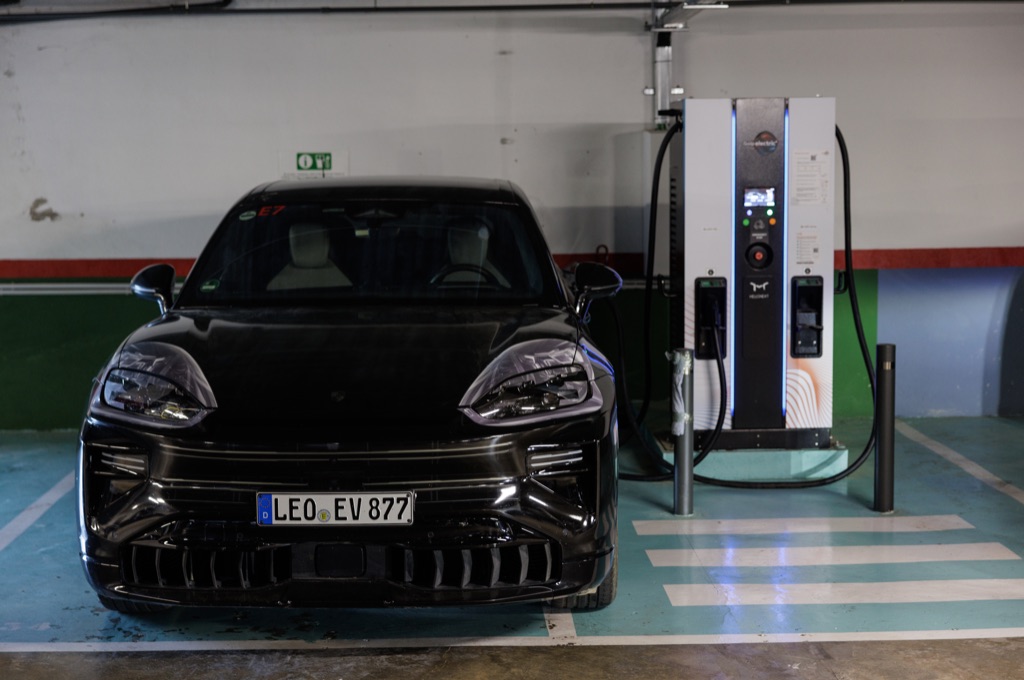
Still, the Cayenne should be pretty efficient for such a high performance electric SUV. It’s been designed to be very aerodynamic; the electric Porsche Cayenne Turbo even has active fins in addition to the obligatory retracting spoiler. It also get a two-speed gearbox, as we’ve seen on the Taycan, which is unusual in electric cars and really helps with efficiency on long motorway journeys.
And given the charging speeds, range shouldn’t be a big concern. Impressively, the charging speed peaks at 400kW, so a 10-80% top-up can take as little as 16 minutes under optimal conditions. Or, put another way, plug into a powerful enough rapid charger and you can achieve 100 miles of range in as little as a little over five minutes.
Fancy a used electric Porsche, instead? Check out the examples for sale on Electrifying.com
You’ll struggle to find a 400kW public rapid charger capable of supplying that sort of power in the UK, though, but the 350kW rapid chargers that are now in many British motorway services won’t be much slower, at all.
There are also dual charging ports on the Cayenne, albeit on the rear wings rather than the front wings as we’ve seen on the Taycan.
Practicality and boot space
Porsche doesn’t want to score points with the Cayenne EV solely in terms of its tech highlights and driving dynamics – although, of course, it is still designed to be the "sports car among SUVs". But the Cayenne has also always been the most practical and family-friendly Porsche. With that in mind, the Cayenne can tow a seriously impressive 3.5 tonnes in its all-wheel drive variants, which will make it one of the best electric tow cars on sale when it arrives in summer 2026.
Because the new Cayenne is also longer than its predecessor, with a total length of 4.98-metres and a wheelbase of 3020mm, there’s even more space than before. More space for those in the front- and back, and a lot more luggage space. A huge 90-litre frunk is a really useful addition, and boot space is also up – now measuring a rather vast 781-litres (or 1,588 litres with the seats folded flat). For some context, the Audi Q8 e-tron offers 569-litres of boot space, and the Polestar 3 manages just 484-litres, plus an extra 34-litres in its frunk.
While our prototype drive experience was hardly the most thorough for testing family practicality and versatility, I really do think that the Cayenne will be one of the most spacious and usable electric sports SUVs out there.
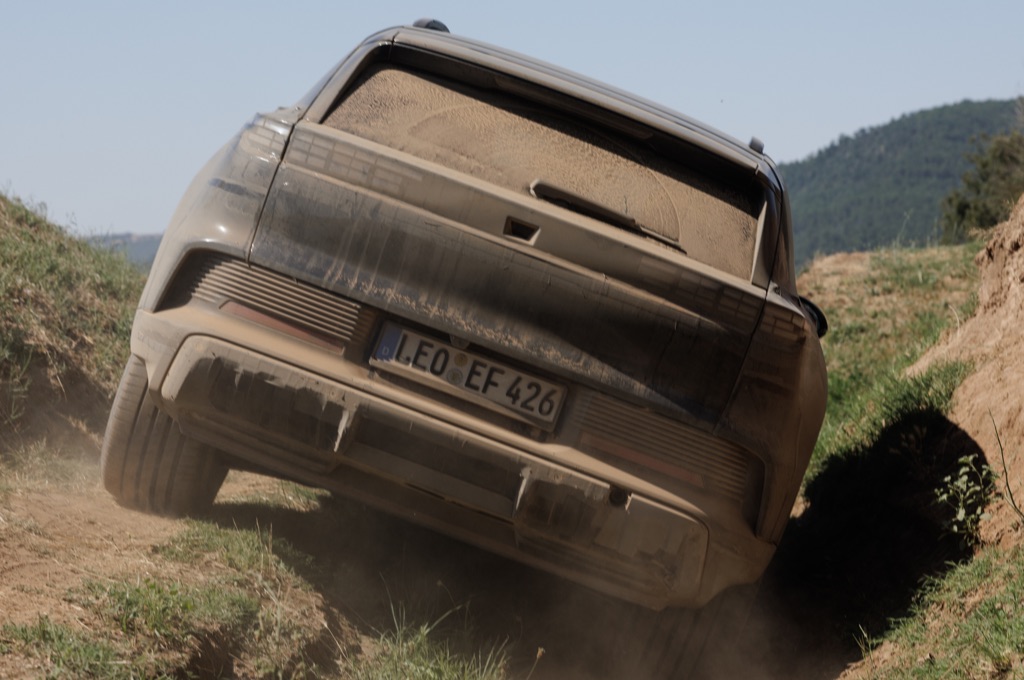
Interior, design/styling and technology
I’ll keep this brief, because even the interior was disguised on our prototype Cayennes. But, when I sneaked a peek under the thick camouflage mats in the cockpit, there’s a digital landscape that looks like the Macan at first glance but actually has quite a lot more to offer.
"We've come up with something new again," says Schätzle, piquing curiosity about a centre console. "It’s like nothing you've seen before."
Oh yes, and there's more luxury too, including electrically opening doors – as you’d expect from a full limo-class car like the BMW i7, which should tell you something about the level that Porsche is aiming at for the new electric Cayenne.
Motors, performance and handling
The electric Cayenne has been designed to be a performance SUV that’s as capable over long distances as it is on a fun drive down your favourite country road. And, as you’d expect, it’ll gain a variety of models offering rear- and four-wheel drive, and with power output ranging from around 400bhp up to a rather ridiculous 1000bhp in the top-spec Cayenne Turbo.
Schätzle plans to start with three trim levels in the Cayenne, all of which will have that 108kWh battery and all-wheel drive. Even the entry-level electric Cayenne will have well over 400bhp, while the Cayenne S will settle somewhere between 600- and 700bhp, and the Turbo will get that storming 1000bhp powertrain with launch control, making it capable of 0-62mph in under 3.0 seconds.
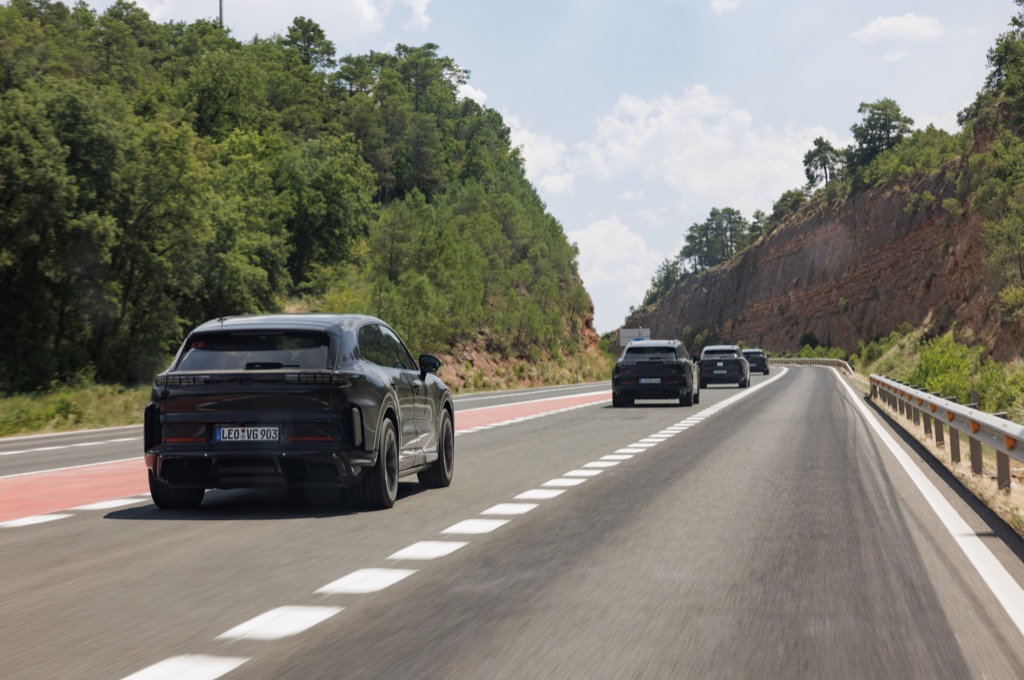
When I did have a brief go in the electric Cayenne Turbo on some winding roads, it played the consumate sports SUV. It felt manoeuvrable and agile even on narrow, winding roads, giving a really good sense of connection between driver and road surface. Our top-spec car gets all the tricks, of course, including all-wheel steering with up to five degrees of steering angle, as well as the ‘ADR suspension’ with electrically adaptive dampers that we’ve already seen and been impressed by on the Taycan.
There’s also regenerative braking that’s capable of harvesting a huge 600kW of energy, yet the pedal feel and the way the friction- and regen’ braking systems blend together gives plenty of control and modulation. It’s a hugely impressive system that gives real confidence in the Cayenne, despite its size and phenomenal pace.
And, as I’ve mentioned, the heavy off-road terrain that Schätzle has navigated in the Cayenne shows that it’s also a far more capable off-roader than you’d ever expect of a road-focussed sports SUV.
Running costs and pricing
The new, electric Porsche Cayenne will go on sale in mid-2026, and while prices are yet to be confirmed, Porsche has told us that it’s aiming to offer price parity between this new electric variant and the petrol Cayenne that will be sold alongside it. Good news, all round, then! With that in mind, we expect the Porsche Cayenne Electric to start from under £90,000, while the top-spec Cayenne Turbo will no doubt be pushing £140,000 or more.
Verdict
We’ll have to wait for a proper drive in the finished article before we give a full, final verdict on the new Porsche Cayenne Electric. But our time in this prototype car showed that going to battery power has in no way limited Porsche’s popular big SUV. If anything, the breadth of ability it now has – from rock-crawler to sports car to family hauler – has only become even more impressive. Can it take on the likes of the updated BMW iX, Polestar 3, Volvo EX90 and others? Well, I suspect it can. I even think it might better them. But we’ll just have to wait and see.
Like the Porsche Cayenne Electric? Try these...
Want all the latest electric car news, reviews and videos? Sign up to the Electrifying newsletter, and don't forget to check out the Electrifying podcast.





